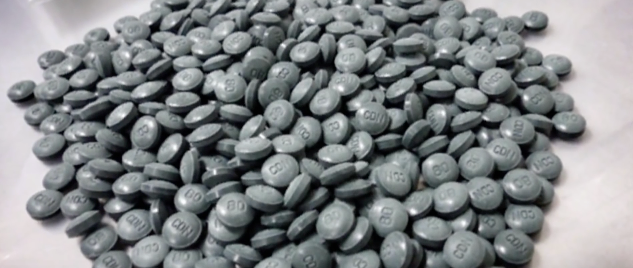
In April this year, British Columbia declared a public health emergency after an alarming spike in drug overdose deaths. Fentanyl, a synthetic opiate analgesic 100 times more powerful than morphine, is of particular concern: it was responsible for a third of the 474 overdose deaths in British Columbia in 2015. Fentanyl is reportedly one of the drugs Prince used and may well have contributed to his demise.
A 2015 report by the Canadian Centre on Substance Abuse has identified two main avenues by which fentanyl is making its way into the Canadian illicit drug market. The first is the diversion of pharmaceutical fentanyl products, and the second is importation or smuggling.
The Globe and Mail conducted an investigation into Canada’s fentanyl crisis, revealing how easy it was to order the drug online from China and how Chinese suppliers cleverly conceal the drug and exploit weaknesses in border control. For example, fentanyl can be hidden in silica desiccant packages and Canadian border guards can only open packages weighing less than 30 grams with the recipient’s consent.
Fentanyl is already an extremely powerful drug – potentially lethal even at very low levels – and its unregulated manufacture in clandestine labs makes it particularly dangerous.
To make matters worse, fentanyl is a drug dealer’s dream. One kilogram of pure fentanyl ordered over the Internet has a street value of $20 million in Calgary. Very little is required to prepare the fentanyl for distribution: simply cut it with something like baby powder and put it through a pill press.
Dr Hakique Virani, an addiction medicine specialist at the University of Alberta, estimated that it would only cost about $100,000 for all the raw materials to transform a kilogram of fentanyl into one million tablets, which each sells for $20.
Virani explains the consequences of fentanyl use, which he says is “cutting across every layer of society,” in this video:
Canada’s opioid problem has been growing steadily since 1996 when Health Canada approved OxyContin (a brand name for oxycodone) as a treatment for moderate to severe pain. Canadian doctors went wild with the prescription pad, and Canada is the world’s second largest per capita consumer of opioids.
“We need to rein in excessive prescribing,” Benedikt Fischer, senior scientist at Toronto’s Centre for Addiction and Mental Health, told the Globe and Mail regarding the painkiller crisis. “When we do that, we will likely make a dent into this problem. Right now, we’re not.”
While Canada’s use of opioids continues to climb, several measures have been introduced to try to stem the flow of fentanyl-related deaths. The Face the Fentanyl campaign aims to educate people about the dangers of the drug, some Canadian provinces are making the opiate overdose antidote Naxolone available without a prescription, and Alberta has introduced a law requiring a license to own or operate a pill press.
However, with British Columbia’s drug overdose death toll predicted to reach a staggering 800 this year, the measures to combat Canada’s fentanyl scourge may be too little too late.
This article (A Deadly Dose: Canada’s Fentanyl Crisis ) is a free and open source. You have permission to republish this article under a Creative Commons license with attribution to the author Bullseye and AnonHQ.com.




